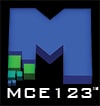This technology pertains to the storage of flash points at a frequency of the geospatial sensors of a geospatial optical switching and routing cube, such that all of the positions of the light contact are recorded on a linear time scale as flash points that are stored in a separate cube that has programmable light memory. This flash point is possible through a geospatial emitter that sends the photons of the exact copy of the processor to the sensors on the optical memory cube. The sensors on the optical memory cube are interfaced with the optical memory. The optical memory cube is able to simultaneously check the optical memory to determine if there is a pattern match for the provided pattern of geospatial light, and can return a partial or a simplified result. A partial is through magnetic indication if the provided light pattern was partially detected based on the similarities, and the closest pattern then appears. A simplified result would be the memory cube either has a record of the pattern and returns what is the equivalence of a ‘yes’ with the timestamp of when the previous occurrence(s) occurred, or a ‘no’ and then the pattern is stored with a timestamp.
The programmable light memory is able to store the actual photons. The memory is comprised of a dark matter medium that has a magnetic circuitry, able to store and retrieve photons based on the magnetic qualities of the photons. The storage capacity of each memory chip, that is the equivalence of the size of the diameter of a human hair, would have the capability of storing peta-bytes of information. This is possible at such a small scale because the photons take no physical space. The optical memory has an accuracy of lower than a quantum level. The material used to create the memory is a non-nuclear material that is derived from other nuclear materials due to the use of super-magnetic breakdown and re-formulation of the matter with geospatial matter lasers.

















